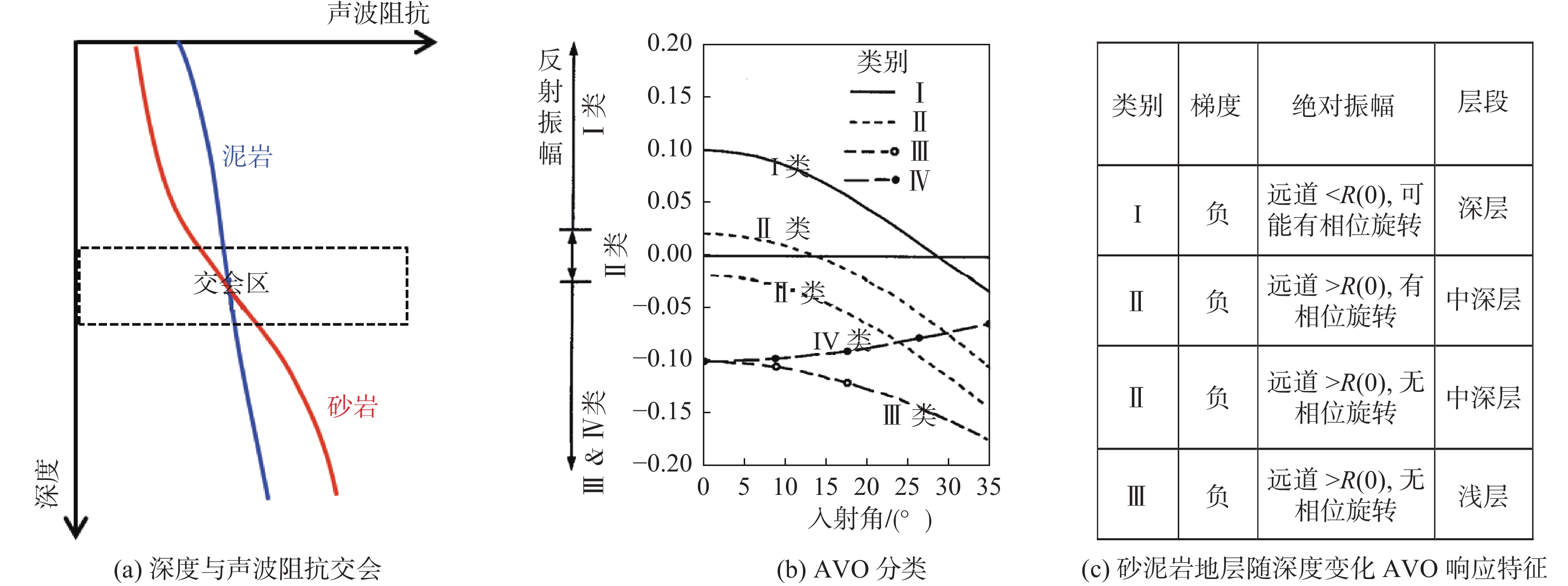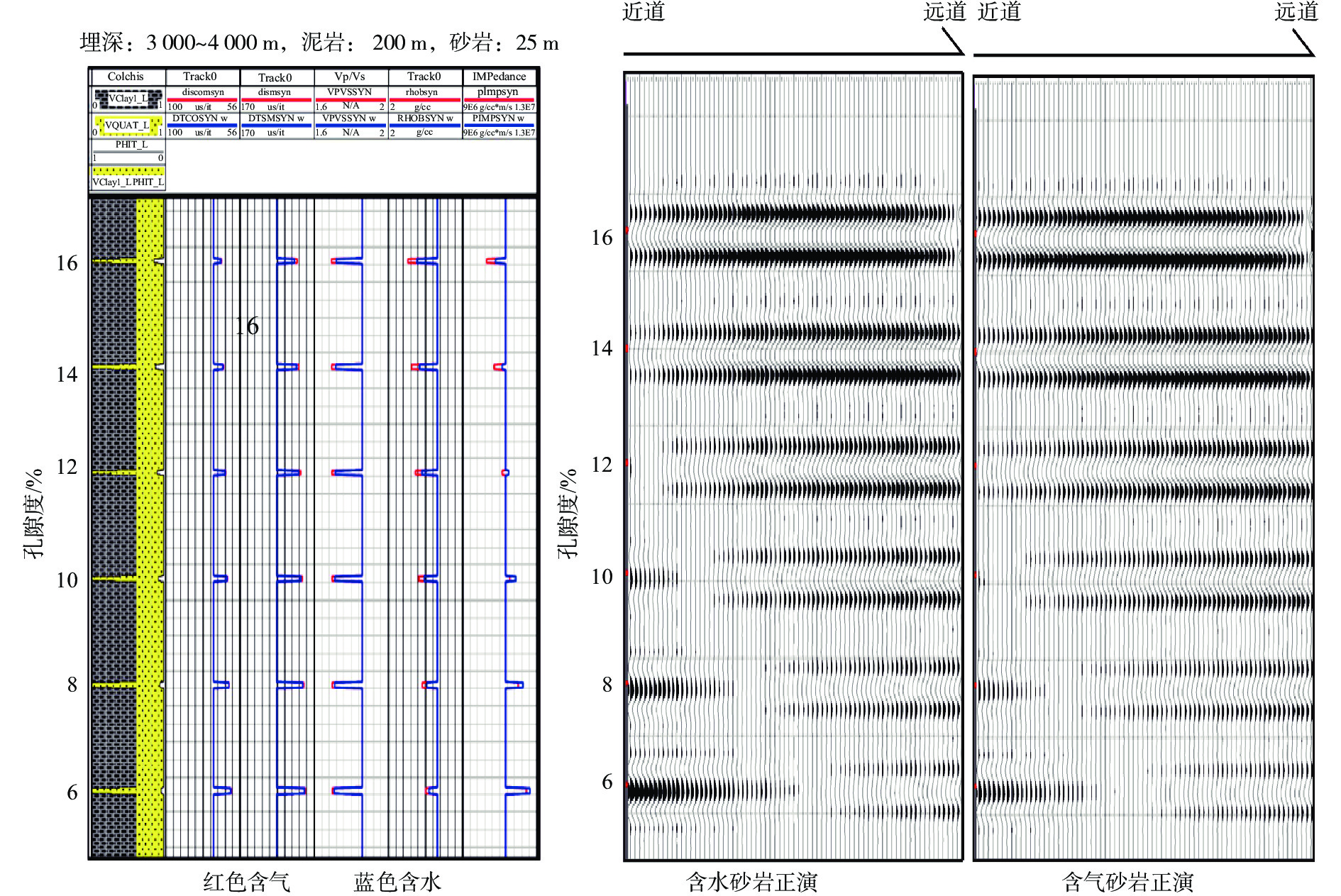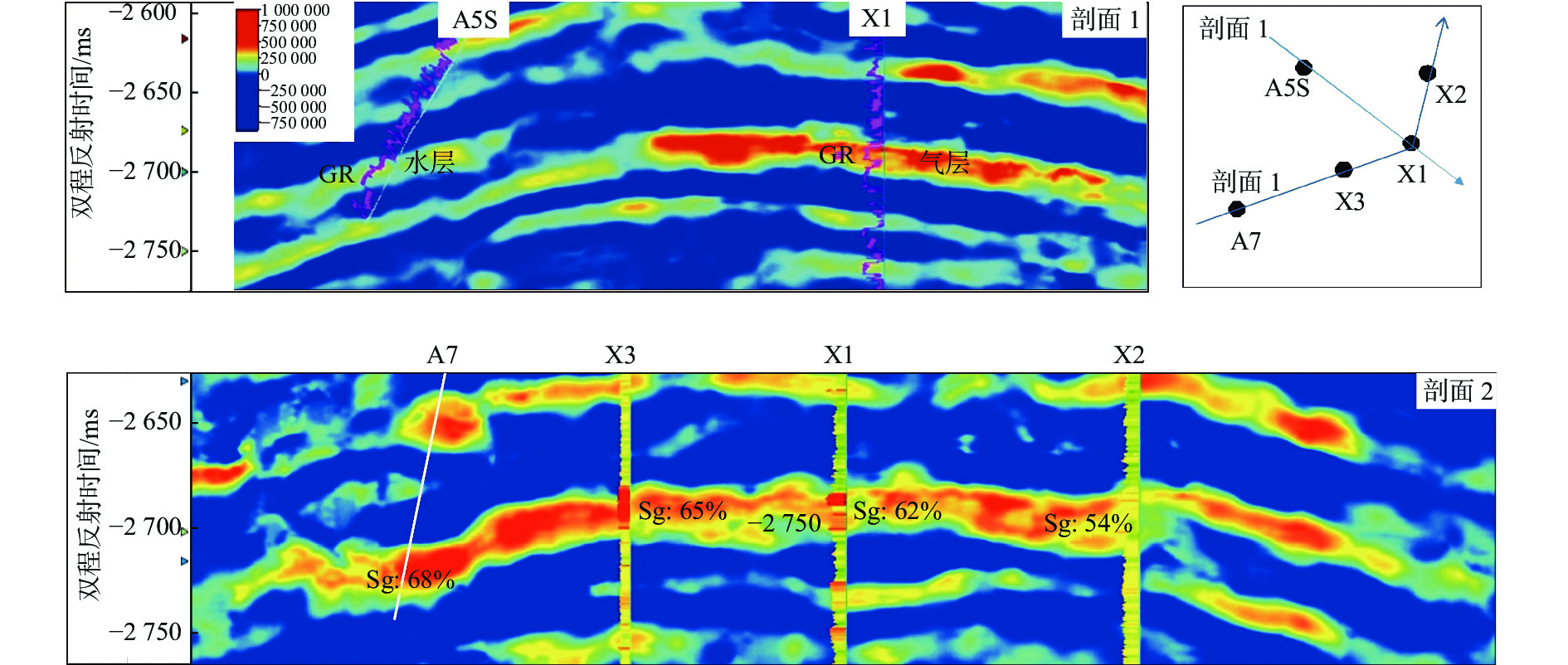CATEGORY DESCRIPTION AND FLUID DETECTION FOR LOW PERMEABILITY RESERVOIRS IN HY GAS FIELD OF XIHU SAG
-
摘要:
HY气田位于西湖凹陷中央反转构造带南部,主要目的层花港组上段为浅水三角洲沉积,储层为中低孔低渗储层,地震响应特征表现为Ⅱ类AVO(Amplitude Variation with Offset)。受压实作用影响,储层孔隙度由上至下逐渐降低,AVO类型由Ⅱb类向Ⅱa类转变。从岩石物理分析、正演模拟、相位转换及AVO投影角度旋转等方面,制定了针对低渗储层不同AVO特征的精细描述方法。研究认为,区内中孔低渗储层表现为Ⅱb类AVO响应特征,叠后地震砂顶标定于波谷,储层描述应采用叠后−90°相移波形解释、叠后包络属性流体检测等方法;低孔低渗储层表现为Ⅱa类AVO响应特征,储层描述应采用叠后0°相移波形解释、叠前扩展弹性阻抗流体检测等方法。基于上述“一层一策”储层精细描述方法,成功指导研究区多口钻井实施,储层预测及流体检测成功率100%,大幅改善气田开发现状。
Abstract:The HY Gas Field is located in the south of the central inversed structural belt of the Xihu Sag. The upper part of Huagang Formation is dominated by shallow water deltaic deposits, and the reservoir is characterized by medium-low porosity and low permeability, of which the seismic response characteristics are of class II AVO. Affected by compaction, the reservoir porosity gradually decreases from top to bottom, as AVO type changes from Class IIb to Class IIa. In this paper, a detailed description method for the low permeability reservoir with different AVO characteristics is proposed from petrophysical analysis, forward simulation, phase conversion and AVO projection angle rotation. It is considered that the medium-porosity and low-permeability reservoirs in the area are characterized by class IIb AVO response characteristics, and the post-stack seismic sand top is calibrated in the trough. Reservoir description should adopt post-stack 90 degree phase shift waveform interpretation, post-stack envelope attribute fluid detection, etc. Low porosity and low permeability reservoirs are characterized by class IIa AVO response characteristics. Reservoir description should use post-stack 0 degree phase shift waveform interpretation, pre-stack extended elastic impedance fluid detection and other methods. Based on the fine reservoir description method of "one method for one layer", multiple wells were successfully drilled in the study area, and the success rate of reservoir prediction and fluid detection was 100%, which has greatly improved the development of the gas field.
-

-
[1] 赵洪,蒋一鸣,沈文超,等. 西湖凹陷花港组物源特征及对储层的影响研究[J]. 煤炭科学技术,2018,46(2):65-72.
[2] 张建培,徐发,钟韬,等. 东海陆架盆地西湖凹陷平湖组-花港组层序地层模式及沉积演化[J]. 海洋地质与第四纪地质,2012,32(1):35-41.
[3] 刘亚茹,高顺莉,周平,等. 西湖凹陷转换断裂发育特征及其油气地质意义[J]. 海洋地质前沿,2020,36(10):42-49.
[4] 曾洪流,朱筱敏,朱如凯,等. 陆相坳陷型盆地地震沉积学研究规范[J]. 石油勘探与开发,2012,39(3):275-284.
[5] 姚云霞,刘江,张雷. 叠前纵横波联合反演技术在PH油气田薄储层预测中的应用[J]. 中国海上油气,2011,23(6):377-379. doi: 10.3969/j.issn.1673-1506.2011.06.005
[6] 何昕锴,李晓龙,赵洪,等. 东海西湖凹陷碎屑岩物源聚类分析[J]. 海洋地质前沿,2020,36(6):11-19.
[7] 冉令. 一种基于地震波形指示的反演方法研究[J]. 中国石油大学胜利学院学报,2016,30(3):3-5. doi: 10.3969/j.issn.1673-5935.2016.03.002
[8] 杜伟维,金兆军,邸永香. 地震波形指示反演及特征参数模拟在薄储层预测中的应用[J]. 工程地球物理学报,2017,14(1):56-61. doi: 10.3969/j.issn.1672-7940.2017.01.010
[9] 明君,王辉,林桂康. 扩展AVO技术在渤海油田的应用[J]. 地球物理学进展,2015,23(6):2736-2740. doi: 10.6038/pg20150635
[10] 才巨宏. 综合应用波形分析及地震特征反演技术预测滩坝砂岩:以博兴洼陷梁108地区为例[J]. 油气地质与采收率,2005,12(3):42-44. doi: 10.3969/j.issn.1009-9603.2005.03.013
[11] 史会峰. 基于贝叶斯理论MCMC优化参数的负荷预测模型[D]. 北京: 华北电力大学, 2013.
[12] 刘化清,倪长宽,陈启林,等. 地层切片的合理性及影响因素[J]. 然气地球科学,2014,25(11):1822-1829.
[13] 钱玉贵,叶泰然,张世华,等. 叠前地质统计学反演技术在复杂储层量化预测中的应用[J]. 石油天然气学报,2013,34(6):834-840.
[14] 孙月成,周家雄,马光克,等. 叠前随机反演方法及其在薄层预测中的应用[J]. 地质勘探,2010,30(12):29-32.
[15] 程冰洁,徐天吉,李曙光. 频变AVO含气性识别技术研究与应用[J]. 地球物理学报,2012,55(2):608-613.
-




 下载:
下载:











